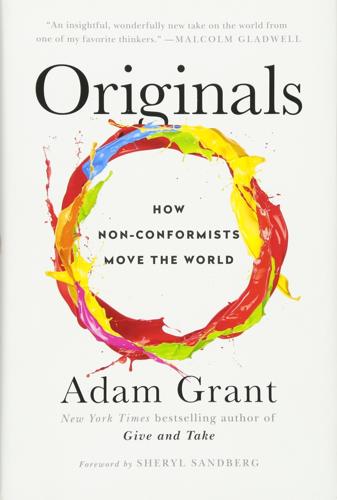
Originals: How Non-Conformists Move the World
by
Adam Grant
Published 2 Feb 2016
The four founders weren’t hindered: Personal interviews with Lon Binder, December 30, 2014, and Neil Blumenthal and Dave Gilboa, February 2, 2015. As an inventor: Adam Higginbotham, “Dean Kamen’s Mission to Bring Unlimited Clean Water to the Developing World,” Wired, August 13, 2013, www.wired.co.uk/magazine/archive/2013/08/features/engine-of-progress; Christopher Helman, “Segway Inventor Dean Kamen Thinks His New Stirling Engine Will Get You off the Grid for Under $10K,” Forbes, July 2, 2014, www.forbes.com/sites/christopherhelman/2014/07/02/dean-kamen-thinks-his-new-stirling-engine-could-power-the-world; Erico Guizzo, “Dean Kamen’s ‘Luke Arm’ Prosthesis Receives FDA Approval,” IEEE Spectrum, May 13, 2014, http://spectrum.ieee.org/automaton/biomedical/bionics/dean-kamen-luke-arm-prosthesis-receives-fda-approval. 3: Out on a Limb Out on a Limb: Susan J.
…
Before it was too late, Dean Kamen would have learned to make it practical or licensed the technology to someone who could. The Segway may have failed, but Kamen is still a brilliant inventor, Jeff Bezos is still a visionary entrepreneur, and John Doerr is still a shrewd investor. Whether you’re generating or evaluating new ideas, the best you can do is measure success on the kind of yardstick that batters use in baseball. As Randy Komisar puts it, “If I’m hitting .300, I’m a genius. That’s because the future cannot be predicted. The sooner you learn it, the sooner you can be good at it.” Dean Kamen has moved on to unveil a series of new inventions, back in the health-care space where he made his original mark.
…
Their methods question conventional wisdom about the relative importance of intuition and analysis in assessing ideas, and about how we should weigh passion in evaluating the people behind those ideas. You’ll see why it’s so difficult for managers and test audiences to accurately evaluate new ideas, and how we can get better at deciding when to roll the dice. A Random Walk on the Creative Tightrope The inventor of the Segway is a technological whiz named Dean Kamen, whose closet is stocked with one outfit: a denim shirt, jeans, and work boots. When I asked venture capitalists to describe Kamen, the most common response was “Batman.” At sixteen, he took it upon himself to redesign a museum’s lighting system—and only then sought the chairman’s permission to implement it.

The Future Is Faster Than You Think: How Converging Technologies Are Transforming Business, Industries, and Our Lives
by
Peter H. Diamandis
and
Steven Kotler
Published 28 Jan 2020
PART 3: THE FASTER FUTURE Chapter Thirteen: Threats and Solutions Water Woes “Special Report on Global Warming”: The intergovernmental panel on climate change, see: https://www.ipcc.ch/sr15/. Global Risks Report: World Economic Forum, “Global Risks Report 2018: 13th Edition,” January 17, 2018. See: https://www.weforum.org/reports/the-global-risks-report-2018. Dean Kamen: Dean Kamen, author interview, 2018. For more information about Dean Kamen, see his bio on the FIRST Robotics website here: https://www.firstinspires.org/about/leadership/dean-kamen. we recounted the story of Kamen’s “Slingshot”: Peter Diamandis and Steven Kotler, Abundance: The Future Is Better Than You Think (Free Press, 2012), pp. 88–91. 900 million people lack access to clean drinking water: World Health Organization (WHO) and the United Nations Children’s Fund (UNICEF), “Progress on Drinking Water, Sanitation and Hygiene,” 2017.
…
Solving our planet’s ecological woes requires technology, for certain, but it also demands one of the largest cooperative efforts in history. If we can learn to work together like never before, we like our chances. But in light of these recent reports, sooner rather than later. And this brings us to Dean Kamen. Dean Kamen is a kind of geek superhero, a nerd Batman in a denim work shirt. For starters, he lives in a secret lair—an island fortress complete with hidden rooms, helicopter launchpads, and after peacefully seceding from the United States, its own constitution. His résumé includes over 440 different patents, including insulin pumps, robotic prosthetics, and all-terrain wheelchairs.
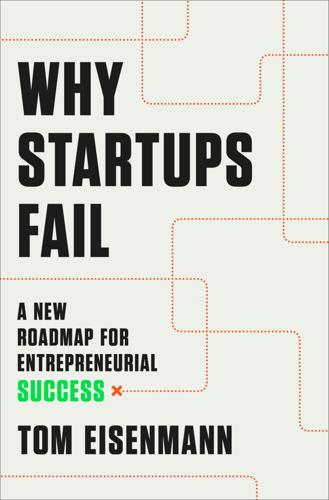
Why Startups Fail: A New Roadmap for Entrepreneurial Success
by
Tom Eisenmann
Published 29 Mar 2021
Iridium is another example: Details in this paragraph are from John Bloom, Eccentric Orbits: How a Single Man Saved the World’s Largest Satellite Constellation from Fiery Destruction (New York: Atlantic Monthly Press, 2016); market research projections are described on p. 196 and the $6.4 billion investment is cited on p. 209. “If I had asked people”: Patrick Vlaskovits, “Henry Ford, Innovation, and That ‘Faster Horse’ Quote,” Harvard Business Review blog, Aug. 29, 2011. Dean Kamen, the inventor: Details in this paragraph are from Steve Kemper, Code Name Ginger: The Story Behind Segway and Dean Kamen’s Quest to Invent a New World (Boston: Harvard Business School Press, 2003). ADL projections are cited on p. 63; the initial consumer rider test is described on p. 227. the company sold just thirty thousand: Jordan Golson, “Well, That Didn’t Work: The Segway Is a Technological Marvel.
…
Also, as discussed in Chapter 4, entrepreneurs can supplement smoke testing by getting customer feedback on a “looks like” prototype, as Jibo’s team did when they built a “Wizard of Oz” prototype that could be puppeteered by a hidden human operator to see how consumers would interact with a social robot. Another barrier to gauging customer demand can be an entrepreneur’s paranoia. Some founders insist on staying in stealth mode as long as possible to keep rivals from stealing their ideas. Steve Jobs was famous for insisting on strict secrecy and then introducing new products with a flourish. Dean Kamen, the inventor of the Segway—the two-wheel, self-balancing (via gyroscope stabilization) “personal transporter” unveiled in late 2001—and the startup’s founder, was worried about Honda or Sony copying his concept; for years, Kamen refused to let his marketing team get direct customer input. Segway did hire Arthur D.
…
Under the spell of a reality distortion field, potential employees, investors, and strategic partners perceive a reality in which their commitment to the venture can—despite enormous obstacles—help make the founder’s dream come true. Shai Agassi rivaled Jobs in his ability to spin up a reality distortion field. So did Dean Kamen, Segway’s charismatic founder. Like Agassi, Kamen believed he could save the planet, once electric-powered Segways replaced automobiles in cities around the world. And much like Agassi, who predicted that his company would soon overtake GM in market capitalization, Kamen insisted Segway would become the fastest-growing company in the world, because it would “do to the car what the PC did to the mainframe.”

The Singularity Is Nearer: When We Merge with AI
by
Ray Kurzweil
Published 25 Jun 2024
BACK TO NOTE REFERENCE 246 “Microfiber Matters,” Minnesota Pollution Control Agency, February 4, 2019, https://www.pca.state.mn.us/featured/microfiber-matters [inactive]. BACK TO NOTE REFERENCE 247 For more on Dean Kamen’s Slingshot technology, see “Slingshot Water Purifier,” Atlas Initiative Group, YouTube video, February 11, 2012, https://www.youtube.com/watch?v=Uk_T9MiZKRs; Tom Foster, “Pure Genius: How Dean Kamen’s Invention Could Bring Clean Water to Millions,” Popular Science, June 16, 2014, https://www.popsci.com/article/science/pure-genius-how-dean-kamens-invention-could-bring-clean-water-millions. BACK TO NOTE REFERENCE 248 For a long but clear and entertaining video on how Stirling engines work and why they offer some important advantages, see “Stirling Engines—The Power of the Future?
…
Many of the deadliest viruses are so small that they pass through the holes in ordinary filters.[246] Similarly, the molecules of some pollutants cannot be blocked by normal filtration.[247] Yet recent innovations in materials science are creating filters that block smaller and smaller toxins. In the coming years, nanoengineered materials will enable filters to work faster and be very inexpensive. An especially promising emerging technology is the Slingshot water machine, invented by Dean Kamen (born 1951).[248] It is a relatively compact device—about the size of a small refrigerator—that can produce totally pure water that meets the standards for an injectable liquid, from any source, including sewer water and contaminated swamp water. The Slingshot requires less than one kilowatt of electricity to operate.
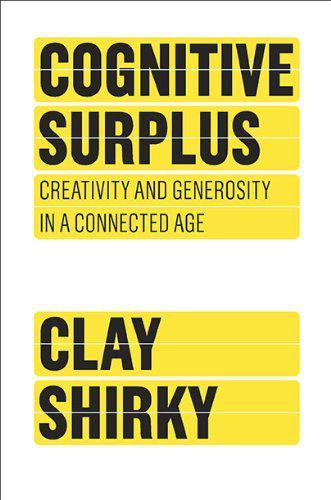
Cognitive Surplus: Creativity and Generosity in a Connected Age
by
Clay Shirky
Published 9 Jun 2010
We should care more about public and civic value than about personal or communal value because society benefits more from them, but also because public and civic value are harder to create. The amount of public and civic value we get out of our cognitive surplus is an open question, and one strongly affected by the culture of the groups doing the sharing, and by the culture of the larger society that those groups are embedded in. As Dean Kamen, the inventor and entrepreneur, puts it, “In a free culture, you get what you celebrate.” Depending on what we celebrate in one another, we can get a few pieces of public and civic value, like those we see today in Wikipedia and open source software and the Responsible Citizens, or we can celebrate people who create civic value, making it a deep part of the experience of users everywhere.
…
storyId=100624625 (accessed January 10, 2010). 170 Susan’s campaign flooded Muthali’s office with chaddis: Robert Mackey, “Indian Women Fight Violence with Facebook and Underwear,” New York Times Lede Blog, February 13, 2009, http://thelede.blogs.nytimes.com/2009/02/13/indian-women-use-facebook-for-valentines-protest (accessed January 10, 2010). 171 the state of Mangalore arrested Muthali: “Muthali Arrested to Save V-Day in Karnataka,” Indian Express, February 13, 2009, http://www.indianexpress.com/news/muthalik-arrested-to-save-vday-in-karnataka/423184 (accessed January 9, 2010). 175 You can always get what you want . . .: From Gary Kamiya’s “The Death of the News,” Salon, February 17, 2009, http://www.salon.com/opinion/kamiya/2009/02/17/newspapers/index.html (accessed January 10, 2010). 176 In a free culture, you get what you celebrate: Dean Kamen describes this idea in “You Get What You Celebrate,” Xconomy Boston, January 2, 2008, http://www.xconomy.com/boston/2008/01/02/you-get-what-you-celebrate (accessed January 10, 2010). 177 the assumption that “people are basically good”: “Pierre Omidyar on ‘Connecting People,’” BusinessWeek, June 20, 2005, http://www.businessweek.com/magazine/content/05_25/b3938900.htm (accessed January 10, 2010). 177 This idea, as noble as it is, didn’t quite pan out for eBay: Tobias J.
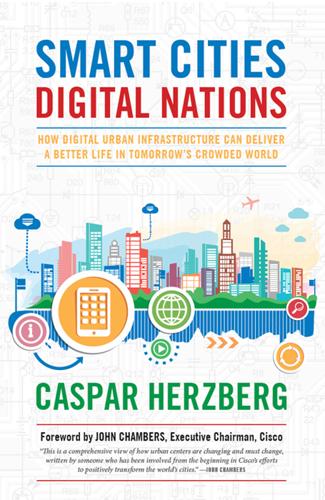
Smart Cities, Digital Nations
by
Caspar Herzberg
Published 13 Apr 2017
It is one thing to propose digital urban infrastructure, another to find a government with the means and intent to build it. For instance, there may be many unforeseen (or obvious) impediments to reducing the cost of the “Slingshot,” a prototype machine that can purify 250 gallons of water per day for a few dollars worth of energy. This is a remarkable breakthrough, which its inventor Dean Kamen believes can be the type of game-changer that could end water-borne diseases that kill two million people a year. But at present, each unit costs $100,000. It will be an uphill climb to achieve the economy of scale necessary to bring a Slingshot to every village in Africa. An innovator and his team have provided the world with a great technological advance, but it remains to be seen if global markets and political calculations will help in the creation of necessary supply chains.2 The “smart villages” of India, which must overcome the severe water shortage in that nation, will depend on exactly this sort of problem-solving.
…
And it will be constant, as the body’s sensors talk with data analysis engines that serve each patient individually. Surgery and long-term care will be automated more often (although not exclusively). Care for the swelling population of elderly citizens will be managed in great part by machines that can dispense proper doses of medicine, provide locomotion (Dean Kamen has also invented the iBOT, a motorized wheelchair),5 perform surgeries, and, through future generations of telepresence and other communication technology, keep their trusts in regular contact with their families. Human error that leads to deaths will have dropped significantly. Air-quality sensors will help identify bacteria and reduce airborne illnesses.
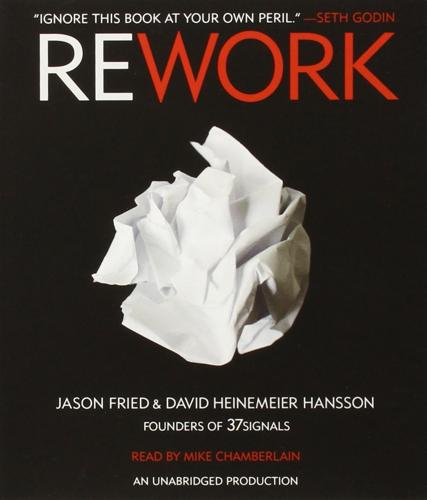
Rework
by
Jason Fried
and
David Heinemeier Hansson
Published 9 Mar 2010
And here’s a list of some of the people we know, and don’t know, who have inspired us in one way or another: Frank Lloyd Wright Seth Godin Warren Buffett Jamie Larson Clayton Christensen Ralph Nader Jim Coudal Benjamin Franklin Ernest Kim Jeff Bezos Scott Heiferman Antoni Gaudi Carlos Segura Larry David Steve Jobs Dean Kamen Bill Maher Thomas Jefferson Mies van der Rohe Ricardo Semler Christopher Alexander James Dyson Kent Beck Thomas Paine Gerald Weinberg Kathy Sierra Julia Child Marc Hedlund Nicholas Karavites Michael Jordan Richard Bird Jeffrey Zeldman Dieter Rams Judith Sheindlin Ron Paul Timothy Ferriss Copyright © 2010 by 37signals, LLC.
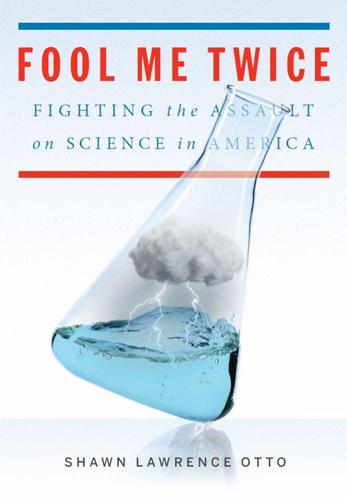
Fool Me Twice: Fighting the Assault on Science in America
by
Shawn Lawrence Otto
Published 10 Oct 2011
“Every 11 seconds, America moves one person closer, and number three hundred million could come by birth, by oath as a legal immigrant, or by stealth: someone sneaking into history.”31 Even the United Kingdom’s Guardian newspaper made it look easy: “Nobody knows the precise second at which the US will cross the 300 million mark, though the time given next Tuesday [9:01 and 48 seconds in the morning] is the literal interpretation of US census projections.”32 As inventor Dean Kamen says, “We get what we celebrate. If we celebrate actors and celebrity, we get the balloon boy and stupid people acting out to get on reality shows. If we celebrate sports, we get a bunch of kids wearing jerseys, but how many of them will actually become millionaire sports heroes? What if we celebrate science and engineering with that same adoration?”
…
Natty Adams, Gillian Adler, Peter Agre, Rick Anthes, Paula Apsell, Derek Araujo, Chuck Atkins, Randy Atkins, Norm Augustine, Jennifer Ayers, David Baltimore, Craig Barrett, Bill Bates, Erik Beeler, Rosina Bierbaum, Larry Bock, Ben Bova, Bob Breck, Douglas Bremner, David Brin, Deborah Byrd, Art Caplan, Arne Carlson, Darlene Cavalier, Bill Chameides, Matthew Chapman, Peg Chemberlin, Steven Chu, Pat Churchland, Ralph Cicerone, Rita Colwell, George Crabtree, Austin Dacey, Ronald DePinho, Keith Devlin, Calvin DeWitt, Ann Druyan, Vern Ehlers, Harold Evans, Dick Feely, Kevin Finneran, Andrew Fire, Ira Flatow, Al Franken, Gwen Freed, Peter Frumhoff, Richard Gallagher, Jim Gentile, Jack Gibbons, Newt Gingrich, Linda Glenn, Wolfgang Goede, Bart Gordon, Kurt Gottfried, Francesca Grifo, David Guston, Jocey Hale, Michael Halpern, Philip Hammer, Bruce Hendry, Sharon Hendry, Kathryn Hinsch, Roald Hoffman, John Holdren, Rush Holt, Doug Holtz-Eakin, Al Hurd, Shirley Ann Jackson, Thomas Campbell Jackson, Mariela Jaskelioff, James Jensen, Eric Jolly, Dean Kamen, Steve Kelley, Don Kennedy, Alex King, Sheril Kirshenbaum, Barbara Kline Pope, Sara Kloek, Kevin Knobloch, Kei Koizumi, Lawrence Krauss, Paul Kurtz, Eric Lander, Neal Lane, Phoebe Leboy, Leon Lederman, Russ Lefevre, Alan Leshner, Simon Levin, Jane Lubchenco, Michael Mann, Elizabeth Marincola, Thom Mason, John Mather, Bob May, Angie McAllister, Jim McCarthy, Robert McKee, Marcia McNutt, Ann Merchant, Ken Miller, Chris Mooney, Jonathan Moreno, Jan Morrison, Elizabeth Muhlenfeld, P.Z.

Drive: The Surprising Truth About What Motivates Us
by
Daniel H. Pink
Published 1 Jan 2008
And if your starting assumption is that workers' default setting is to shirk, monitoring their time can keep them on their toes. But the billable hour has little place in Motivation 3.0. For nonroutine tasks, including law, the link between how much time somebody spends and what that somebody produces is irregular and unpredictable. Imagine requiring inventor Dean Kamen or actress Helen Mirren to bill for their time. If we begin from an alternative, and more accurate, presumption that people want to do good work then we ought to let them focus on the work itself rather than the time it takes them to do it. Already, a few law firms are moving in this new, more Type I direction charging a flat rate rather than a time-based fee with the presiding partner of one of New York's leading law firms recently declaring, This is the time to get rid of the billable hour.
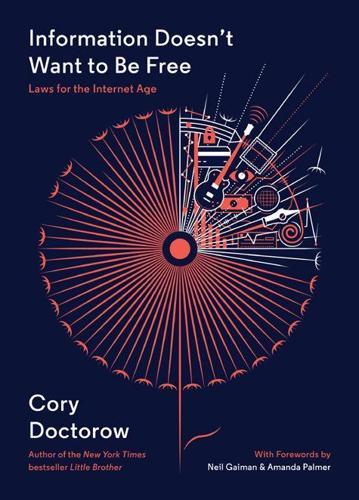
Information Doesn't Want to Be Free: Laws for the Internet Age
by
Cory Doctorow
,
Amanda Palmer
and
Neil Gaiman
Published 18 Nov 2014
Mark and Carla took up other projects after that, and many years later Mark found himself covering the launch of a new service called Blogger for a magazine called the Industry Standard. He still had the boingboing.net domain, and so he “revived” the magazine as a blog, posting a few items a week for a year, for the enjoyment of himself and a few friends. But in early 2001, Mark broke a major story. He dug up the patent drawings for a secret device created by famed inventor Dean Kamen that had been code-named “Ginger.” Everyone was abuzz about what Ginger might be. (It turned out to be the Segway scooter, which pretty much failed to revolutionize the world the way its investors had claimed it world.) CNN featured Boing Boing’s home page on the air, and Mark’s readership shot up exponentially overnight.
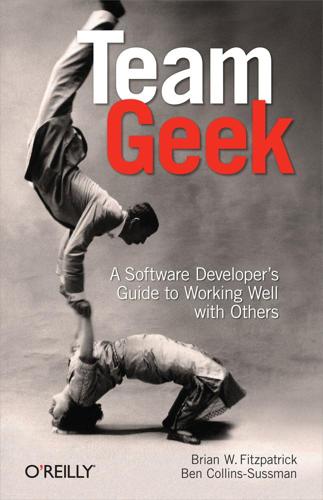
Team Geek
by
Brian W. Fitzpatrick
and
Ben Collins-Sussman
Published 6 Jul 2012
” — Vint Cerf “I’ve been working with engineers for over 30 years, and in that time I’ve learned that engineering is as much about people as it is science and technology, but most engineers put little or no effort into understanding how to work with others. If you want to be more effective and efficient at creating and innovating, then this book is for you.” — Dean Kamen “Ben and Fitz have assembled an amazing collection of patterns and anti-patterns for software development teams to consider. This book is for anyone struggling with understanding how to make such a team more productive—for the code wranglers themselves, for their managers, and for everyone in orbit around them.
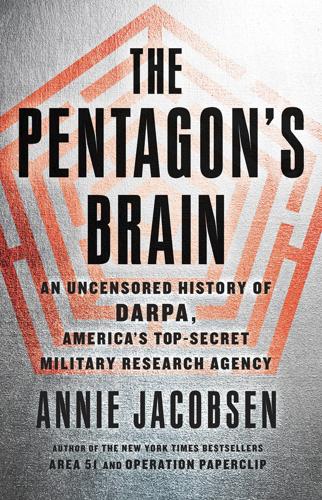
The Pentagon's Brain: An Uncensored History of DARPA, America's Top-Secret Military Research Agency
by
Annie Jacobsen
Published 14 Sep 2015
The hand was preprogrammed, like a player piano.” In some regards, Revolutionizing Prosthetics did more for DARPA’s image than it did for warfighters who had lost limbs in war. Major news organizations wrote stories about the DEKA arm, hailing it as revolutionary, spectacular, and astounding. In 2009, Dean Kamen, DEKA’s founder, recalled on 60 Minutes what it was like when DARPA officials came to him proposing to build a robotic arm. “They said, ‘We want these kids to have something put back on them that will essentially allow one of these kids to pick up a raisin or a grape off the table, know the difference without looking at it.’”
…
Armed Forces, 2000–2012,” Medical Surveillance Monthly Report 20, no. 7 (July 2013): 4–11. 7 SUBNETS: “SUBNETS Aims for Systems-Based Neurotechnology and Understanding for the Treatment of Neuropsychological Illnesses,” Department of Defense, press release, October 25, 2013. 8 chips wirelessly transmit: George Dvorsky, “Electroconvulsive Therapy Can Erase Unwanted Memories,” iO9, December 23, 2013. 9 “incorporate near real-time”: “SUBNETS,” DARPA News, October 25, 2013. 10 “notes on a piano”: Emily Singer, “Playing Piano with a Robotic Hand,” MIT Technology Review, July 25, 2007. 11 “The Intrinsic hand”: Jonathan Kuniholm, “Open Arms,” IEEE Spectrum, March 1, 2009. 12 Dean Kamen: Kamen interview with Scott Pelley, CBS News, 60 Minutes, April 10, 2009. 13 yet to find a partner: Rhodi Lee, “FDA Approves DEKA Arm System,” Tech Times, May 10, 2014. 14 “debt we owe”: “From Idea to Market in Eight Years: DARPA-Funded DEKA Arm System Earns FDA Approval,” DARPA News, May 9, 2014. 15 “turn a valve”: Interview with Noel Sharkey, September 2014. 16 Even the cooks: Interview with LANL cooks, March 2014. 17 Kenyon and his team: Kenyon’s DARPA contract is administered through the University of Michigan as part of the New Mexico Consortium (NMC).
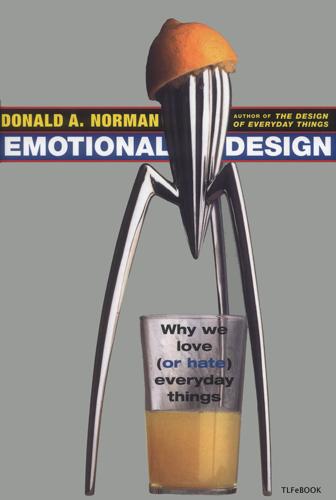
Emotional design: why we love (or hate) everyday things
by
Donald A. Norman
Published 10 May 2005
An excellent review of these issues—and the source for this paragraph—is Krumhansl, 2002, especially note p. 46. 117 "All cultures have evolved musical scales." This section draws heavily from Krumhansl (2002) and Meyer (1956, p. 67). 120 "The designers of the Segway." Descriptive material for the "Segway Human Transporter." Amazon.com site. December 2002. Also, personal conversation with Dean Kamen, the inventor of Segway, February 25, 2003. 123 "the passions aroused in film" (Boorstin, 1990, p. 110) 124 "The vicarious eye puts our heart in the actor's body" (Boorstin, 1990, p. 110) 125 "the social scientist Mihaly Csikszentmihalyi" (Csikszentmihalyi, 1990) 126 "The word'voyeur'" (Boorstin, 1990, p. 12) 126 "The voyeur's eye demands."
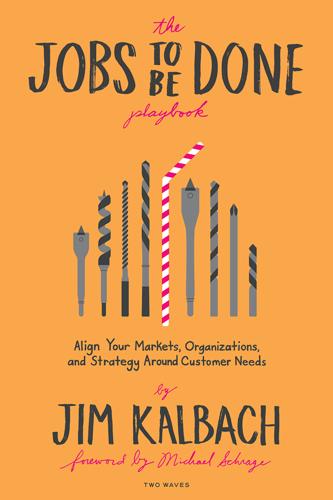
The Jobs to Be Done Playbook: Align Your Markets, Organization, and Strategy Around Customer Needs
by
Jim Kalbach
Published 6 Apr 2020
CHAPTER 6 Delivering Value IN THIS CHAPTER, YOU WILL LEARN ABOUT THESE PLAYS: • How to create a customer journey map • How to make customers successful during onboarding • How to reduce churn • How to provide better customer support On December 3, 2001, the Segway was unveiled on the ABC News morning program Good Morning America. The first of the self-propelled transporters was delivered in early 2002. The hype leading up to the launch of the Segway was immense. For instance, Dean Kamen, inventor of the Segway, expected to be selling 10,000 units a week by the end of 2002—that’s half a million a year. Venture capitalist John Doerr also predicted it would reach $1 billion in sales faster than any company in history, and that the Segway could be bigger than the internet. Even Steve Jobs commented that the Segway would be as big a deal as the PC.
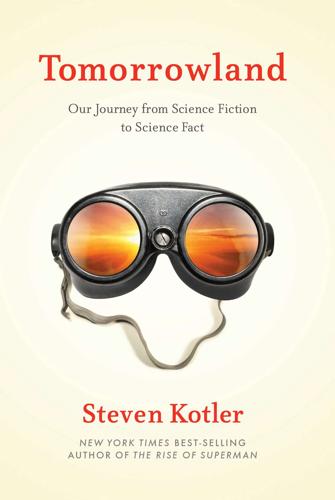
Tomorrowland: Our Journey From Science Fiction to Science Fact
by
Steven Kotler
Published 11 May 2015
He saluted as he crossed the finish line, placing in the bottom third of the field but still ahead of dozens of able-bodied competitors. “It’s pretty strange to see guys with two legs looking at me with jealousy,” says Rozelle, “but that’s what happened.” Meanwhile, with all the wounded soldiers returning from battle, the military continued to fund bionic research. In 2006, DARPA contracted inventor Dean Kamen, who specializes in revolutionary medical devices, to develop a new kind of arm. As Kamen put it, “DARPA wanted me to build an arm-hand combo that could pick up a grape without breaking it, which requires very fine haptic sensing; lift a raisin without dropping it, which requires fine motor control and wrist, elbow, and shoulder flexibility; be entirely self-contained, including the power supply; weigh less than nine pounds; and fit on a 50th-percentile female frame, 32 inches from the long finger to the shoulder.

Exponential Organizations: Why New Organizations Are Ten Times Better, Faster, and Cheaper Than Yours (And What to Do About It)
by
Salim Ismail
and
Yuri van Geest
Published 17 Oct 2014
The following shows how four major brands are launching initiatives that will nudge them towards an MTP: Vodafone: Partnering with the Malala Fund to bring literacy to millions of women in developing countries. Vodafone aims to use mobile technology to lift 5.3 million women out of illiteracy by 2020. Coca-Cola: Coca-Cola has partnered with entrepreneur and inventor Dean Kamen to leverage the Slingshot, Kamen’s water purification device. One unit can provide enough drinking water for three hundred people daily. By 2015, Coca-Cola plans to bring one hundred million liters of water to 45,000 people across twenty countries. Cisco: From 2008 to 2012, Cisco Israel invested $15 million to establish a healthy entrepreneurial ecosystem in the Palestinian territory of the West Bank.

The End of Medicine: How Silicon Valley (And Naked Mice) Will Reboot Your Doctor
by
Andy Kessler
Published 12 Oct 2009
It’s the flip side that’s most interesting. We’re gonna need lots more nursing homes. Or extra bedrooms in our kids’ homes. Homes on golf courses go on a tear. Cruise ships out of Florida and San Diego see a resurgence. Online bridge replaces poker as the new hot fad. I can see Social Security and Medicare being means tested. Dean Kamen needs to dust off the plans for his Segway personal transportation device and make it senior-friendly. Bland food makes a comeback. The Rolling Stones set up permanently at Caesars in Las Vegas. A pretty scary thought. And me? Do I think I’m going to live forever? Our economy and our technology can and will do spectacular things.
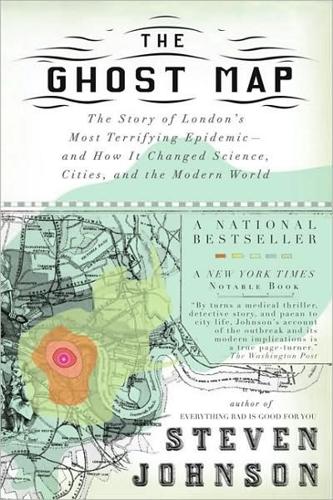
The Ghost Map: A Street, an Epidemic and the Hidden Power of Urban Networks.
by
Steven Johnson
Published 18 Oct 2006
They’ll be dealing with 20 million people, instead of 2 million, but the scientific and technological wisdom available to them far exceeds what Farr and Chadwick and Bazalgette had at their disposal. Some of the most ingenious solutions now being proposed take us back to the waste-recycling visions that captivated so many Victorian minds. The inventor Dean Kamen has developed two affiliated machines—each the size of a dishwasher—that together can provide electricity and clean water to rural villages or shantytown communities that lack both. The power generator runs off a readily available fuel—cow dung—though Kamen says it will run off “anything that burns.”
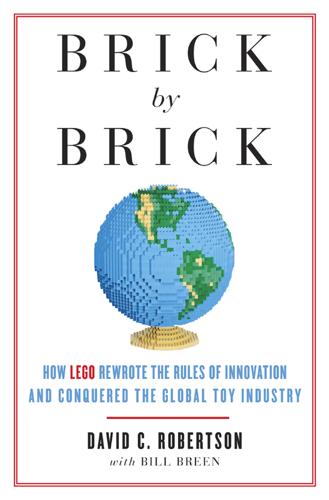
Brick by Brick: How LEGO Rewrote the Rules of Innovation and Conquered the Global Toy Industry
by
David Robertson
and
Bill Breen
Published 24 Jun 2013
—Søren Lund, director, Mindstorms NXT IT WAS LATE APRIL 2010, AND THE GEORGIA DOME WAS rocking. Thousands of LEGO Mindstorms fans had packed the vast arena in downtown Atlanta to witness the world finals of the FIRST LEGO League robotics competition, a kind of Junior Olympics for math and science athletes from every part of the planet. Pioneered by Segway inventor Dean Kamen and his nonprofit organization, FIRST (For Inspiration and Recognition of Science and Technology), the three-day tourney featured a rollicking series of showdowns between eighty-one teams with a total of eight hundred Mindstorms wizards ages nine to sixteen, and hundreds of adult volunteers supporting them.

The Singularity Is Near: When Humans Transcend Biology
by
Ray Kurzweil
Published 14 Jul 2005
—BILL GATES "If you have ever wondered about the nature and impact of the next profound discontinuities that will fundamentally change the way we live, work, and perceive our world, read this book. Kurzweil's Singularity is a tour de force, imagining the unimaginable and eloquently exploring the coming disruptive events that will alter our fundamental perspectives as significantly as did electricity and the computer." —DEAN KAMEN, physicist and inventor of the first wearable insulin pump, the HomeChoice portable dialysis machine, the IBOT Mobility System, and the Segway Human Transporter; recipient of the National Medal of Technology "One of our leading AI practitioners, Ray Kurzweil, has once again created a 'must read' book for anyone interested in the future of science, the social impact of technology, and indeed the future of our species.
…
My peer expert readers who provided the invaluable service of carefully reviewing the scientific content: Robert A. Freitas Jr. (nanotechnology, cosmology), Ralph Merkle (nanotechnology), Martine Rothblatt (biotechnology, technology acceleration), Terry Grossman (health, medicine, biotechnology), Tomaso Poggio (brain science and brain reverse-engineering), John Parmentola (physics, military technology), Dean Kamen (technology development), Neil Gershenfeld (computational technology, physics, quantum mechanics), Joel Gershenfeld (systems engineering), Hans Moravec (artificial intelligence, robotics), Max More (technology acceleration, philosophy), Jean-Jacques E. Slotine (brain and cognitive science), Sherry Turkle (social impact of technology), Seth Shostak (SETI, cosmology, astronomy), Damien Broderick (technology acceleration, the Singularity), and Harry George (technology entrepreneurship ).
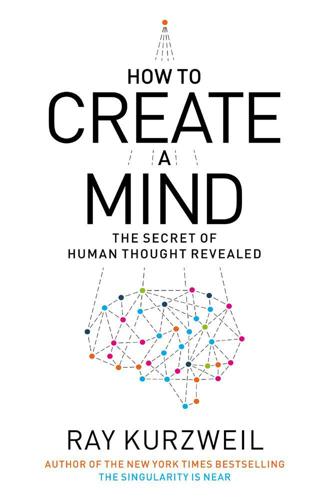
How to Create a Mind: The Secret of Human Thought Revealed
by
Ray Kurzweil
Published 13 Nov 2012
ACKNOWLEDGMENTS I’d like to express my gratitude to my wife, Sonya, for her loving patience through the vicissitudes of the creative process; To my children, Ethan and Amy; my daughter-in-law, Rebecca; my sister, Enid; and my new grandson, Leo, for their love and inspiration; To my mother, Hannah, for supporting my early ideas and inventions, which gave me the freedom to experiment at a young age, and for keeping my father alive during his long illness; To my longtime editor at Viking, Rick Kot, for his leadership, steady and insightful guidance, and expert editing; To Loretta Barrett, my literary agent for twenty years, for her astute and enthusiastic guidance; To Aaron Kleiner, my long-term business partner, for his devoted collaboration for the past forty years; To Amara Angelica for her devoted and exceptional research support; To Sarah Black for her outstanding research insights and ideas; To Laksman Frank for his excellent illustrations; To Sarah Reed for her enthusiastic organizational support; To Nanda Barker-Hook for her expert organization of my public events on this and other topics; To Amy Kurzweil for her guidance on the craft of writing; To Cindy Mason for her research support and ideas on AI and the mind-body connection; To Dileep George for his discerning ideas and insightful discussions by e-mail and otherwise; To Martine Rothblatt for her dedication to all of the technologies I discuss in the book and for our collaborations in developing technologies in these areas; To the KurzweilAI.net team, who provided significant research and logistical support for this project, including Aaron Kleiner, Amara Angelica, Bob Beal, Casey Beal, Celia Black-Brooks, Cindy Mason, Denise Scutellaro, Joan Walsh, Giulio Prisco, Ken Linde, Laksman Frank, Maria Ellis, Nanda Barker-Hook, Sandi Dube, Sarah Black, Sarah Brangan, and Sarah Reed; To the dedicated team at Viking Penguin for all of their thoughtful expertise, including Clare Ferraro (president), Carolyn Coleburn (director of publicity), Yen Cheong and Langan Kingsley (publicists), Nancy Sheppard (director of marketing), Bruce Giffords (production editor), Kyle Davis (editorial assistant), Fabiana Van Arsdell (production director), Roland Ottewell (copy editor), Daniel Lagin (designer), and Julia Thomas (jacket designer); To my colleagues at Singularity University for their ideas, enthusiasm, and entrepreneurial energy; To my colleagues who have provided inspired ideas reflected in this volume, including Barry Ptolemy, Ben Goertzel, David Dalrymple, Dileep George, Felicia Ptolemy, Francis Ganong, George Gilder, Larry Janowitch, Laura Deming, Lloyd Watts, Martine Rothblatt, Marvin Minsky, Mickey Singer, Peter Diamandis, Raj Reddy, Terry Grossman, Tomaso Poggio, and Vlad Sejnoha; To my peer expert readers, including Ben Goertzel, David Gamez, Dean Kamen, Dileep George, Douglas Katz, Harry George, Lloyd Watts, Martine Rothblatt, Marvin Minsky, Paul Linsay, Rafael Reif, Raj Reddy, Randal Koene, Dr. Stephen Wolfram, and Tomaso Poggio; To my in-house and lay readers whose names appear above; And, finally, to all of the creative thinkers in the world who inspire me every day.

Ghost Road: Beyond the Driverless Car
by
Anthony M. Townsend
Published 15 Jun 2020
The secret was all in the dismount. The slightest shearing force on the seat as you pushed off and you’d send your Schwinn careening off-centerline. So when self-driving cars started to show their mettle, I wondered now and again whether bikes would be next. In 2001, after the unveiling of Ginger, Dean Kamen’s infamous Segway self-balancing scooter, I hoped that our imaginary ghost cycles might become a reality. But I didn’t dare tell anyone about my little daydream. I wasn’t the only one to imagine such things. But it would take a few more years to strip down the self-driving car’s ambitions to cycles.
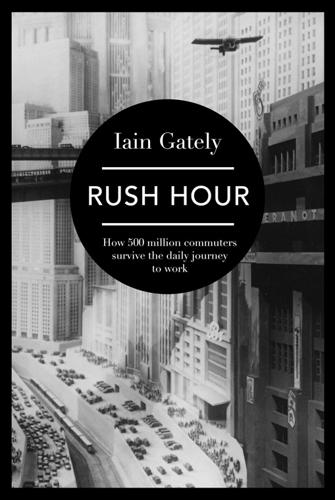
Rush Hour: How 500 Million Commuters Survive the Daily Journey to Work
by
Iain Gately
Published 6 Nov 2014
Mills, CEO, Digital Power Group, ‘The Cloud Begins with Coal – Big Data, Big Networks, Big Infrastructure, and Big Power, An Overview of the Electricity used by the Global Digital Ecosystem’, August 2013. CHAPTER XIV All Change 311 ‘you have a product so revolutionary’, Steve Kemper, Code Name Ginger: The Story Behind Segway and Dean Kamen’s Quest to Invent a New World, 2003. See: http://www.stevekemper.net/disc.htm. 312 For UK commuting statistics 2011, see: http://www.ons.gov.uk/ons/dcp171776_227904.pdf. 314 ‘who think that if we just don’t build any roads’, Alan Pisarski, ‘Forcing Drivers Off the Road Won’t Solve Virginia’s Traffic Woes’, The Virginia News Letter, vol. 76, no. 1, January/February 2000. 314 For US commuter statistics, see ‘Commuting in America III: The Third National Report on Commuting Patterns and Trends’, Transportation Research Board of the National Academies, 2006; and Alan E.
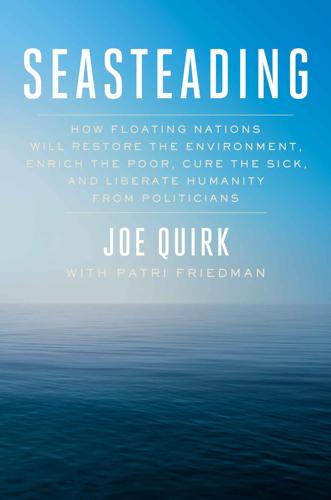
Seasteading: How Floating Nations Will Restore the Environment, Enrich the Poor, Cure the Sick, and Liberate Humanity From Politicians
by
Joe Quirk
and
Patri Friedman
Published 21 Mar 2017
“It is estimated that 5.3 billion people, two-thirds of the world’s population, will suffer from water shortages by 2025.” See also “What Makes Clean Water So Important?,” accessed March 21, 2016, http://blueplanetnetwork.org/water. The twenty-five poorest countries spend 20 percent of their GDP on water: Dean Kamen, quoted in Abundance: The Future Is Better Than You Think (New York: Free Press, 2012), 86. Also in Forbes: www.forbes.com/sites/briancaulfield/2012/01/26/abundance-why-the-future-will-be-much-better-than-you-think. More than a billion people do not have access to safe drinking water, and Six thousand children die every day for lack of clean water to drink, and African and Asian women walk an average of six kilometers each day to provide water: accessed March 21, 2016, http://econopure.com/drinking-water. 120 gallons of water to produce one egg: accessed www.amwater.com/learning-center/water-101/what-is-water-used-for.html.

Machine, Platform, Crowd: Harnessing Our Digital Future
by
Andrew McAfee
and
Erik Brynjolfsson
Published 26 Jun 2017
So we made appointments in Cambridge, New York, London, San Francisco, Silicon Valley, Washington, DC, and other places, and set out. In addition to the interviewees who are quoted in this book, many others taught us a lot: Daron Acemoglu Susan Athey David Autor Jeff Bezos Nick Bloom Christian Catalini Michael Chui Paul Daugherty Tom Davenport Tom Friedman Demis Hassabis Reid Hoffman Jeremy Howard Dean Kamen Andy Karsner Christine Lagarde Yann LeCun Shane Legg John Leonard David Lipton Tom Malone James Manyika Kristina McElheren Tom Mitchell Elon Musk Ramez Naam Tim O’Reilly Gill Pratt Francesa Rossi Daniela Rus Stuart Russell Eric Schmidt Mustafa Suleyman Max Tegmark Sebastian Thrun But you can put off writing for only so long.
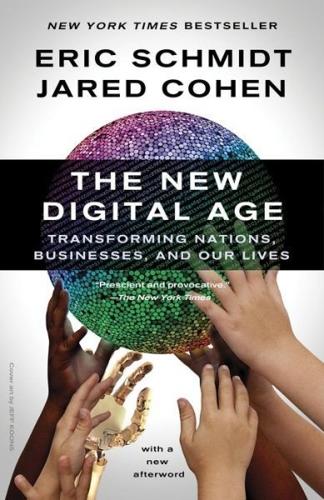
The New Digital Age: Transforming Nations, Businesses, and Our Lives
by
Eric Schmidt
and
Jared Cohen
Published 22 Apr 2013
Our gratitude to all our friends and colleagues whose ideas and thoughts we’ve benefited from: Elliott Abrams, Ruzwana Bashir, Michael Bloomberg, Richard Branson, Chris Brose, Jordan Brown, James Bryer, Mike Cline, Steve Coll, Peter Diamandis, Larry Diamond, Jack Dorsey, Mohamed El-Erian, James Fallows, Summer Felix, Richard Fontaine, Dov Fox, Tom Freston, Malcolm Gladwell, James Glassman, Jack Goldsmith, David Gordon, Sheena Greitens, Craig Hatkoff, Michael Hayden, Chris Hughes, Walter Isaacson, Dean Kamen, David Kennedy, Erik Kerr, Parag Khanna, Joseph Konzelmann, Stephen Krasner, Ray Kurzweil, Eric Lander, Jason Liebman, Claudia Mendoza, Evgeny Morozov, Dambisa Moyo, Elon Musk, Meghan O’Sullivan, Farah Pandith, Barry Pavel, Steven Pinker, Joe Polish, Alex Pollen, Jason Rakowski, Lisa Randall, Condoleezza Rice, Jane Rosenthal, Nouriel Roubini, Kori Schake, Vance Serchuk, Michael Spence, Stephen Stedman, Dan Twining, Decker Walker, Matthew Waxman, Tim Wu, Jillian York, Juan Zarate, Jonathan Zittrain and Ethan Zuckerman.

Machines of Loving Grace: The Quest for Common Ground Between Humans and Robots
by
John Markoff
Published 24 Aug 2015
However, at the Page party, the Yaskawa robot had no apparent difficulty finding the party favor boxes, each of which contained a commemorative T-shirt. Ironically, humans had packed each of those boxes, because the robot was not yet able to handle loose shirts. The Industrial Perception arm wasn’t the only intelligent machine at the party. A telepresence robot was out on the dance floor, swaying to the music. It was midnight in Woodside, but Dean Kamen, the inventor of the Segway, was controlling the robot from New Hampshire—where it was now three A.M. This robot, dubbed a “Beam,” was from Suitable Technologies, another small start-up just a couple of blocks away from Industrial Perception. Both companies were spin-offs from Willow Garage, a robotics laboratory funded by Scott Hassan, a Stanford graduate school classmate and friend of Page’s.
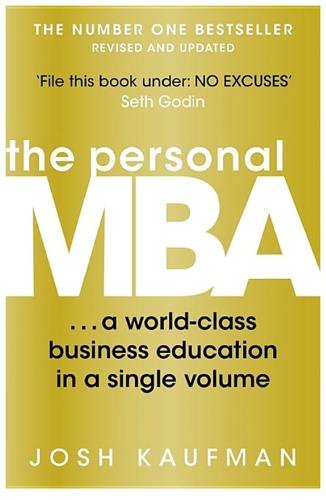
The Personal MBA: A World-Class Business Education in a Single Volume
by
Josh Kaufman
Published 2 Feb 2011
SHARE THIS CONCEPT: http://book.personalmba.com/economically-valuable-skills/ The Iron Law of the Market Market matters most; neither a stellar team nor fantastic product will redeem a bad market. Markets that don’t exist don’t care how smart you are. —MARC ANDREESSEN, VENTURE CAPITALIST AND FOUNDER OF NETSCAPE AND NING.COM What if you throw a party and nobody shows up? In business, it happens all the time. Dean Kamen, a renowned and prolific inventor whose creations include the Sterling engine, the world’s first insulin pump, and water purification devices, poured over $100 million into the development of the Segway PT, a $5,000, two-wheeled, self-balancing scooter that he claimed would revolutionize personal transportation “in the same way that the car replaced the horse and buggy.”
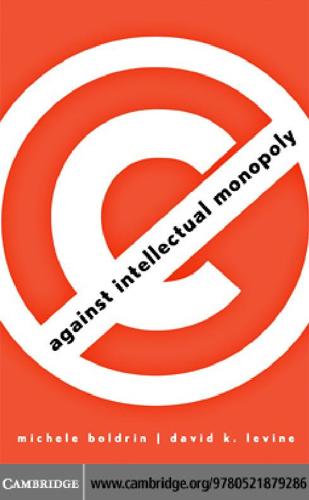
Against Intellectual Monopoly
by
Michele Boldrin
and
David K. Levine
Published 6 Jul 2008
They are captured by the observation first made by Jack Hirshleifer, that the innovator, by virtue of inside information, may be able to earn vastly more than the social value of the innovation.11 To understand Hirshleifer’s argument, consider the recent innovation of the Ginger scooter, now relabeled the Segway, which was said to revolutionize urban transportation, and grant that this unlikely prediction was actually true. How could the inventor, Dean Kamen, profit from this knowledge? There was a point in the development of the scooter at which Mr. Kamen was the only one to know that urban transportation is soon to be revolutionized, and that the automobile itself is soon to be obsolete. Rather than surround himself with patents, and hawk his knowledge to venture capitalists, as he did, he could simply have sold short automobile stock using whatever funds he had available to him and leveraged to the maximum extent possible.
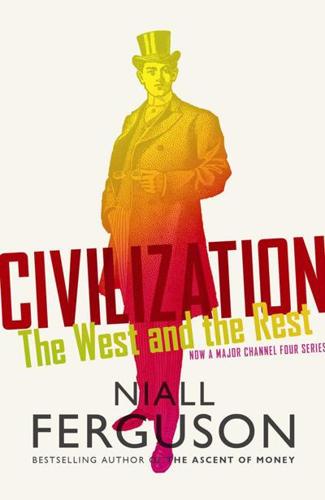
Civilization: The West and the Rest
by
Niall Ferguson
Published 28 Feb 2011
* Angostura bitters were in fact invented by a German in Bolívar’s service, by the name of Dr Johann Gottlieb Benjamin Siegert, who first produced the alcoholic concentrate from a still-secret recipe in 1824. A Pisco Sour without a few drops of Siegert’s concoction is not worthy of the name. * Every stage of the process – cutting, carting, milling, boiling and drying – was physically demanding, and there could be no delay between them. * Dean Kamen’s simple but effective water-purifier could quite easily be distributed through the soft-drink company Coca-Cola’s unrivalled network of production facilities and sales outlets, which extends throughout the developing world. Considering the staggering number of lives lost each year to contaminated drinking water, this would surely lay to rest for ever the pejorative term ‘coca-colonization’
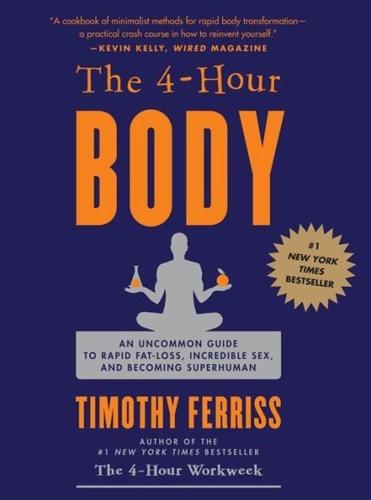
The 4-Hour Body: An Uncommon Guide to Rapid Fat-Loss, Incredible Sex, and Becoming Superhuman
by
Timothy Ferriss
Published 1 Dec 2010
Advanced ICE AGE Mastering Temperature to Manipulate Weight Don’t tell me it’s impossible, tell me you can’t do it. Tell me it’s never been done … the only things we really know are Maxwell’s equations, the three laws of Newton, the two postulates of relativity, and the periodic table. That’s all we know that’s true. All the rest are man’s laws. —Dean Kamen, inventor of the Segway and recipient of the National Medal of Technology and Lemelson-MIT Prize “Michael Phelps eats 12,000 calories a day …” That was all Ray Cronise heard from across the room. He jerked his eyes up from the spreadsheet and reached for the TiVo to pause the television. Twelve thousand calories.
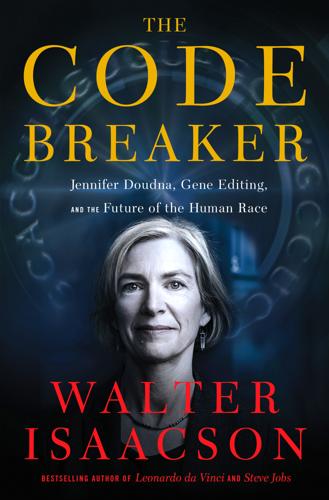
The Code Breaker: Jennifer Doudna, Gene Editing, and the Future of the Human Race
by
Walter Isaacson
Published 9 Mar 2021
Provide your email again so we can register this ebook and send you more of what you like to read. You will continue to receive exclusive offers in your inbox. NOTES Introduction: Into the Breach 1. Author’s interview with Jennifer Doudna. The competition was run by First Robotics, a nationwide program created by the irrepressible Segway inventor Dean Kamen. 2. Interviews, audio and video recordings, notes, and slides provided by Jennifer Doudna, Megan Hochstrasser, and Fyodor Urnov; Walter Isaacson, “Ivory Power,” Air Mail, Apr. 11, 2020. 3. See chapter 12 on the yogurt makers for a fuller discussion of the iterative process that can occur between basic researchers and technological innovation.
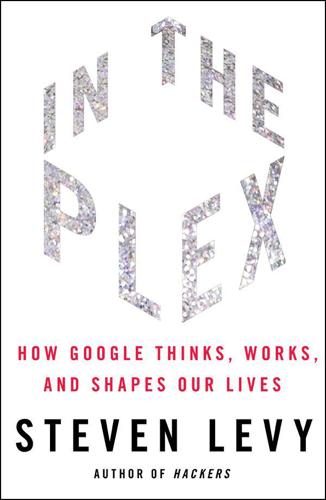
In the Plex: How Google Thinks, Works, and Shapes Our Lives
by
Steven Levy
Published 12 Apr 2011
Both Brin and Page were certainly smart enough and sufficiently self-aware to understand the disrupting impact of unconventional behavior, but it’s as if somewhere along the line—Montessori?—they made independent decisions to act on impulse—even if the results sometimes were, as Mayer says, “mildly socially mortifying.” Larry—do you realize you just questioned the physical constant to [famed inventor] Dean Kamen? Are you sure you’re right about that? Sergey—you just asked Colin Powell whether he made the right moves in Desert Storm. Seriously, you’re talking to Colin Powell! Then there was the time in St. James’s Palace, when they were having dinner with the queen’s husband, Prince Philip. The pomp was intense, a multicourse formal menu.

Future Crimes: Everything Is Connected, Everyone Is Vulnerable and What We Can Do About It
by
Marc Goodman
Published 24 Feb 2015
Though relatively uncommon today, bionic prosthetics will grow tremendously in the coming years, particularly spurred on by the unfortunate needs of thousands of young soldiers returning from Iraq and Afghanistan who have been gravely injured in war. In response, the Pentagon and DARPA, the Defense Advanced Research Projects Agency, have launched the Revolutionizing Prosthetics program, a $100 million investment with over three hundred scientists to completely transform the world of bionics. One such triumph has been the inventor Dean Kamen’s Luke Arm/DEKA prosthesis, whose name was inspired by Luke Skywalker’s robotic arm in Star Wars. The device is controlled by electrical signals from electrodes connected to the wearer’s muscles and is so precise its fingers can pick up a quarter lying flat on a table. Other efforts are under way as well, including MIT’s Human Bionic Project, which catalogs a “repository of every FDA-approved replacement part for amputees, to make it easier for them to find the best ways to rebuild their bodies.”
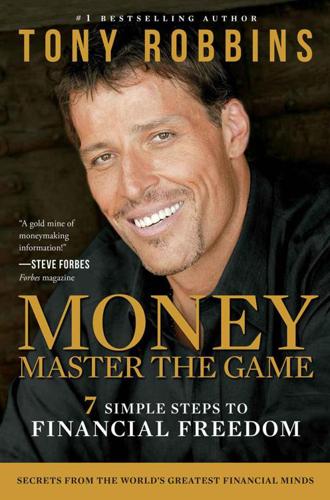
MONEY Master the Game: 7 Simple Steps to Financial Freedom
by
Tony Robbins
Published 18 Nov 2014
Already an Israeli company called Water-Gen is manufacturing a machine that extracts clean water out of air, and it uses only two cents’ worth of electricity to produce each liter of water. And in remote villages that have no electricity, there’s a new kind of water tower that uses only its shape and natural materials to pull moisture out of the air and turn it into drinking water. The amazing inventor Dean Kamen (best known for the Segway scooter) has partnered with Coca-Cola to bring the world an energy-efficient machine the size of a dorm-room refrigerator that vaporizes dirty water and makes it clean and safe. It’s called the Slingshot—as in a David-sized solution to a Goliath of a problem. With innovations such as these, before long the problem of water scarcity will be solved, period.